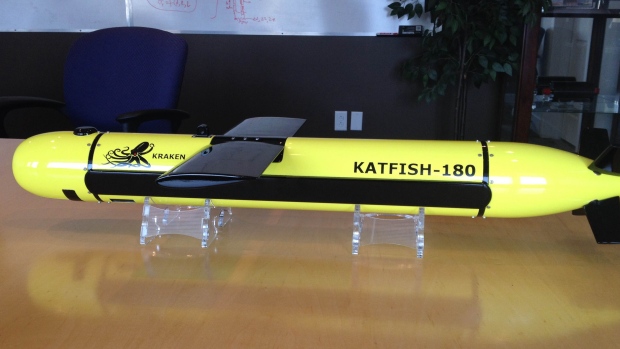ABSTRACT: Militaries around the world see the utility of sending unmanned underwater vehicles on missions that typically require expensive resources and heavy manpower. Similarly, the industrial sector is monetizing the opportunities that lie below the sea’s surface. Recent news flow concerning military and industrial developments confirm these points. And for investors apt to believe in the opportunity, we present a pure play company with technology validated by the U.S. Navy; this company is quickly emerging as an industry leader and recently announced an order from leading defense contractor Elbit Systems.
Reasons to Read this Report
- Catch up on some of the significant newsworthy events in the underwater drone industry since we published our first report “From Air to Water” on September 14, 2015;
- Learn about the continued threat presented by naval mines;
- Aerial drones saturated CES 2016. Find out what the aerial drone manufacturers told us about the underwater drone space, and;
- Discover a public company gaining industry-wide attention and contracts.
Introduction
Since our initial underwater drone report last Fall, there’s been a lot of news flow about the underwater drone industry. Unmanned underwater vehicles (UUV), as the industry likes to call underwater drones, is a nascent industry that we believe will scale similar to the aerial drone industry. The lack of underwater drones at CES demonstrated to us that this is a virgin market, at least in the consumer space where aerial drones buzzed everywhere at three convention halls. Yet research firm MarketandMarkets forecasted the UUV market to grow from $1.2 billion in 2014 to $4.8 billion by 2019. In this report, we provide updates on significant events that have happened in the UUV space since we published From Air to Water”, our first UUV research report.
Water: The Next Big Drone Frontier
Like many new technologies, drones came out of the military where vast R&D budgets brought the concept into reality. Over time, the components came down in price bringing new products into the market. While many investors have made a lot of money in the military aerial drone space – and we still see this vertical growing for many more years – we believe the nascent industrial segment is where investors could make bigger returns. But we believe there is an entirely new drone market segment where investors can get in on the ground floor…
Sophic Capital thinks that the highest drone returns could be made in the sea. Water covers about 71% of the Earth’s surface, with our oceans holding over 96% of that water. Yet less than 5% of the sea beds are mapped (never mind everything between the seabed and the surface). This is important because the seas are the next frontier for harvesting metals, oil and gas, and wind power. Yet, the seas are also the planet’s most hostile work environment. Hence, companies are turning to UUVs to undertake the dirtiest and most dangerous work both above and under water. For this reason, we like this sector and have detailed the market opportunity and some investment ideas in our report “Drones: A Rising Market” published on September 8, 2015 and a second report focused specifically on underwater drones, “From Air to Water” published on September 14, 2015.
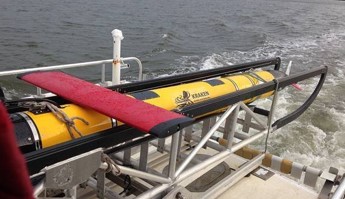
Source: Marine Technology News
The nascent UUV industry is where the unmanned aerial industry (UAV) was in the 1990s – heavily used by the military. Militaries are increasingly adopting UUVs, a market forecasted to be worth $4.8 billion by 2019. Given this, we believe that the underwater drone market could ramp like the aerial drone market did years ago. Our reasoning is that navies have already adopted UUVs for numerous applications ranging from harbour patrol to naval mine detection. Several non-military verticals, which we detail later in this report, are also utilizing UUVs. And although we believe the commercial seabed survey market is the largest, long-term UUV opportunity, the military industry appears to be the closest market to monetize.
Although the military industry is bigger from a unit sales perspective, the commercial seabed survey market is big and growing. It is predominantly a service business, and the number of autonomous underwater vehicle (AUV) units sold into this market is growing off of a small base. The companies servicing this industry are paid daily rates; the longer the boats are out in the sea, the more service companies are paid, so there is less incentive for the service companies to deploy multiple AUVs. This is starting to change as AUV pricing drops, and economic conditions cause end customers to pressure service providers for lower rates. We note that towed platforms can cover even greater areas than AUVs since towed vehicles are faster. For example, Kraken Sonar’s KATFISH platform (discussed later on in this report) has a speed of 8 to 10 knots whereas an AUV may do 2 to 4 knots.
UUV News Ramps through the New Year
Underwater drones continue to make the news. U.S. Admiral Frank Caldwell said that the U.S. Navy needs to invest in UUVs to enhance missions like intelligence gathering and submarine tracking. The U.S. Navy recently deployed drones in the Arctic to measure how ice is melting in order to develop models to predict shipping lanes. The Navy also plans to test a drone for deep-ocean navigation – an autonomous vehicle that could traverse 900 to 1,100 nautical miles – and also plans to deploy drone squadrons by 2020. The New South Wales government in Australia is using underwater drones to help scan for sharks where people swim. And concern continues to grow that underwater drones could pose a threat to the U.K.’s submarine fleet.
Underwater Mines and Unexploded Ordinances Are Naval Threats
Over 400,000 naval mines are in the hands of U.S. competitors and enemies. Many of them are legacy mines, left over from prior wars. And similar to landmines, naval mines stay active for years after a conflict has ended. This poses danger to commercial and military vessels. Over 90% of the world’s goods are transported by sea. Mines that block access to harbours can damage economies.
A simple mine can cost as little as a few thousand dollars to manufacture. This makes them attractive to hostile groups and nations since the return on investment is high if the mine can sink a ship, especially a $13 billion aircraft carrier. A vintage World War I mine used by Iran almost sunk the frigate USS Samuel B. Roberts on April 14, 1988. Ancient Iraqi sea mines also disabled the multi-billion dollar USS Princeton and the amphibious assault ship USS Tripoli – these mines cost less than $25,000 each.
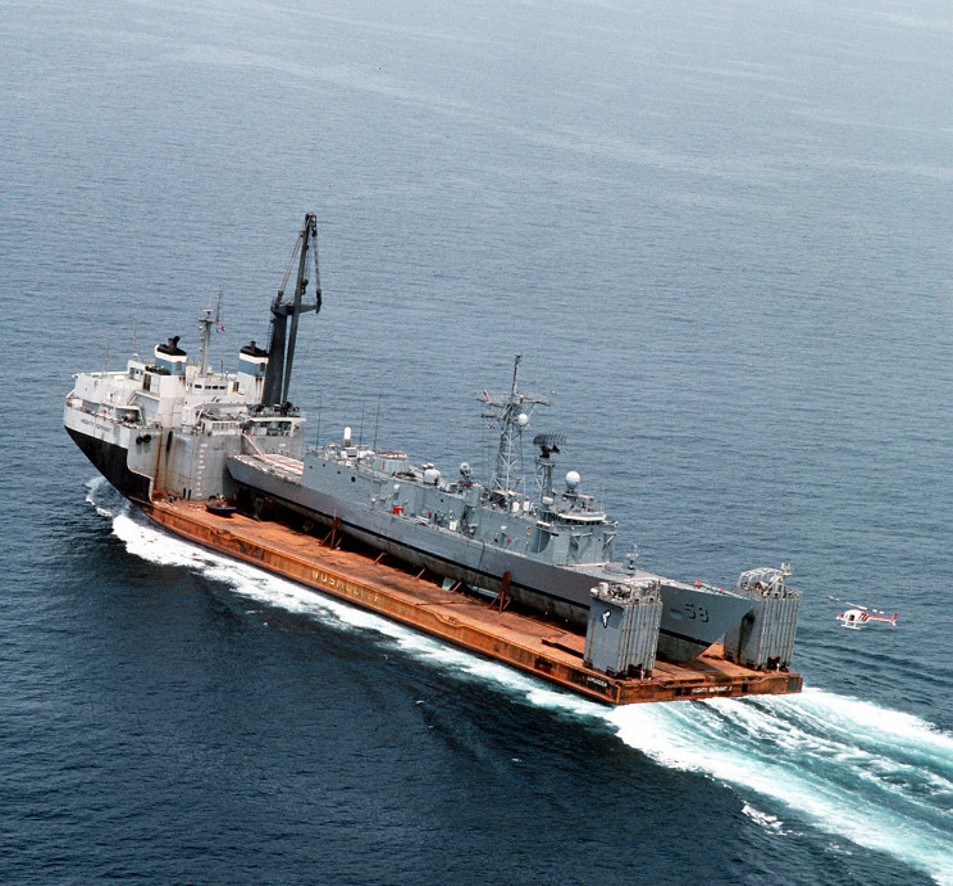
The U.S. Navy hauls the USS Samuel B. Roberts after the frigate struck a mine.
Source: Maritime Quest
Compounding this unsavory situation are drifting mines and unexploded ordinance (UXO) mines whose mooring cables rust out drift ashore. These are threats to beachgoers. And both lakes and the ocean littoral have been used as weapons test ranges as well as for dumping. The bottom of Lac St. Pierre in Quebec is believed to hold over 10,000 “dormant or latent” UXOs which have proven challenging to locate and dispose of.
Mines are a part of political strategies. This past summer, a Chinese mine blockade of Taiwan in the event of a Taiwanese declaration of independence was disclosed. The plan called for the deployment of up to 14,000, with 2,000 mines per day realistic (China has the largest number of sea mines). The purpose of this deployment was to block foreign enemy intervention.
Recent news demonstrates the value of advanced sonar systems for naval mine detection. The Atlas Elektronik UK unmanned surface vehicle (USV) to the right uses towed sonars and mine hunting systems to combat mines.
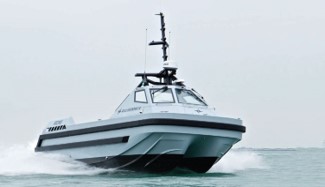
Unmanned Systems Take Men out of the Minefields
Israel’s Elbit Systems (ELST:NASDAQ) recently showed a prototype of what could be the world’s first unmanned system for anti-submarine warfare missions. Called the Seagull, the unmanned system took three years to develop and has deep-water mission capabilities. One of Seagull’s advantages is that since it is unmanned, there is no risk to military crews. In fact, two Seagulls could perform an anti-sub warfare mission equivalent to a frigate and its dozens of crew members. The Seagull also has robotics to identify and neutralized underwater threats.
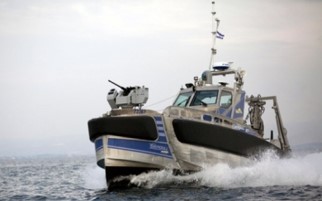
On February 23, Kraken Sonar (PNG:TSXV), a marine technology company engaged in the design, development and marketing of advanced sonar and acoustic velocity sensors for UUVs used in military and commercial applications, announced that it will supply KATFISH to the Elbit Systems Seagull platform.
In a separate article published by The Telegram, a source stated that the contract value could be worth $15 million over multi-years.
Russia Developing Underwater Spy Drones
On January 21, 2016, Russia’s TASS news service announced that the Russian Navy was developing spy drones. Navy Deputy Commander-in-Chief, Vice-Admiral Alexander Fedotenkov said, “Work is underway as well to develop tethered underwater robots capable of carrying out complex operations at big depths.” This was the first indication that Russia was developing such technology whereas the United States has worked on naval drones for over a decade.
U.S. Department of Defense Plans $600 Million UUV Investment
On February 3, Secretary of Defense Ashton Carter announced that “we’re also investing $600 million over the next five years in variable size and variable payload unmanned undersea vehicles – a new capability you’ll be seeing a lot more of.” Secretary Carter said that continued technology investment is critical to maintaining dominance among other nation’s military capabilities. So U.S. military investment in UUVs will continue for the foreseeable future.
India Seeks Mine Counter Measure Technology
India’s Ministry of Defence is looking to procure 12 sets of mine counter measure suites for the Indian Navy. The request for information states that the Ministry is searching for sonar-based mine detection and classification equipment such as hull mounted sonars, towed sonars, and AUVs. Sonar operations include not only mine detection but also route surveys, channel conditioning, and sea bed mapping.
Sea Drone Locates Missing Cargo Ship
On October 1, 2015, the cargo ship El Faro sank during a hurricane close to The Bahamas. Sadly, 33 crew members died. U.S. Navy ship USNS Apache located the wreckage using sonar, and used a towed remotely operated vehicle (ROV) outfitted with a video camera to identify the vessel. A 60 Minutes segment documented the search for El Faro.
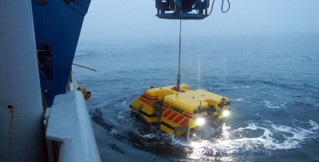
U.S. Navy ROV used to search for the El Faro
Source: Phoenix International Holdings
Towfish Lost Searching for Malaysian Airlines MH370
We’ve written ad nauseam about how the seas are the most dangerous, dirty, and unforgiving work environments for humans. Well the seas are also dangerous for drones. A towfish (a cabled UUV towed behind a ship) searching for Malaysian Airlines MH370 crashed into a 2,200-meter underwater mud volcano and sank. The tow cable snapped and sent the towfish and 4,500 meters of cable to the seafloor. No one was injured in the mishap. This likely would not have happened with Kraken Sonar’s KATFISH; it’s an “intelligent” and “active” towfish that has the ability to “see” ahead using its obstacle avoidance sonar and take immediate corrective action to avoid collisions. “Passive” towfish do not have this capability.
Sea Drone Locates Shipwreck that Could Be Worth Billions
In June 1708, British ships sank the Spanish galleon San Jose. Gold, coins, and precious stones valued between $4 billion and $17 billion went down with the ship. Treasure hunters have spent decades searching for the wreck, and on December 5, 2015, Colombia’s President Santos announced that an international team of experts had discovered the galleon’s remains using autonomous underwater vehicles. However, Seattle-based Sea Search Armada claims to have found the shipwreck back in 1981. As typically happens in the case of valuable shipwrecks, the courts will likely allocate the spoils.

Source: National Maritime Museum
Seafloor Mining Mega Machines
The rush for seabed mining could be unfolding. Nautilus Minerals (NUS:TSX) plans to mine gold, silver, and copper 1,600 meters deep in the sea near Papua New Guinea. Soil Machine Dynamics, a subsea robotic vehicle manufacturer, is creating the massive mining machines (see right), and testing is due in 2016. In the meantime, Nautilus Minerals attended a steel cutting ceremony for the production support vessel being built in China. If the vessel is delivered on time in December 2017, seafloor operations could commence in Q1 2018.
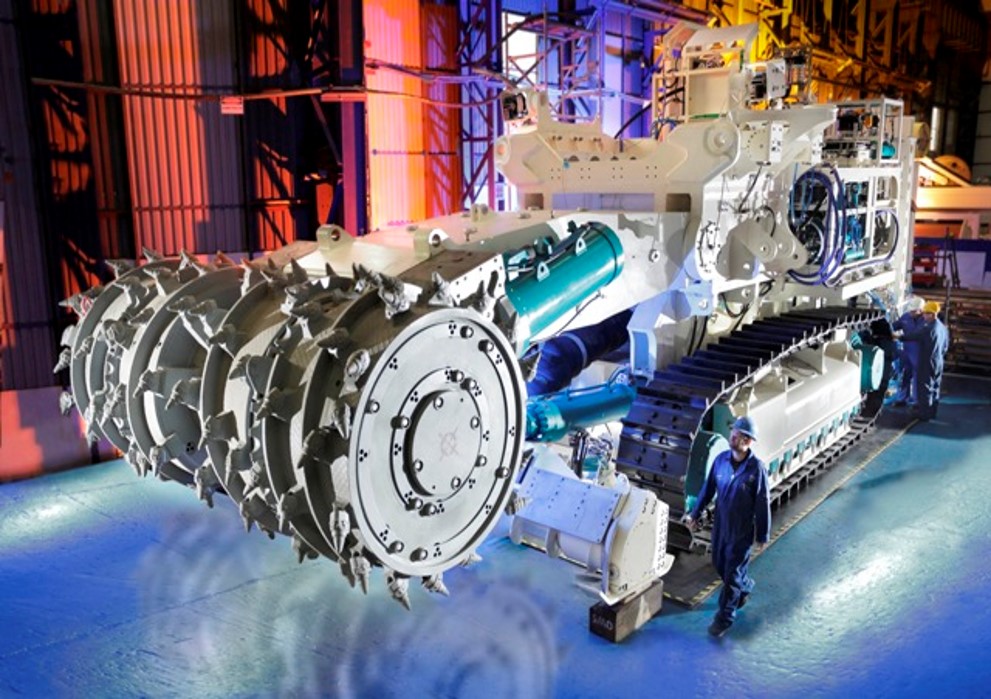
$7 Million Dollar Prize to Advance Ocean Exploration
The Shell Ocean Discovery XPRIZE is a global competition challenging teams to advance deep-sea technologies for autonomous, fast and high-resolution ocean exploration. The three-year competition challenges teams to advance deep-sea technologies for autonomous, fast and high-resolution ocean exploration. The outcomes of the competition will allow full exploration and mapping of the ocean floor. The National Oceanographic and Atmospheric Administration has a $1 million bonus prize to incentivize teams to develop technologies that detect the source of chemical and biological signals underwater.
Source: Shell Ocean Discovery XPRIZE
Consumer Electronics Show 2016
This past January, we attended the Consumer Electronics Show (CES) in Las Vegas to see what was going on in the consumer UUV space. To summarize – nothing. Well, not quite: We saw one company that had a UUV for making films. A shark ate it, so they had to manufacture another. But other than that, when we asked aerial drone manufactures about the consumer opportunity in the sea, many scratched their heads. We suspect this was because none could fathom a business case (we can see fishing, underwater exploration, and underwater filming applications). But although many manufacturers could not see the sea’s potential, this neither eliminates consumer opportunities nor diminish the vast military and industrial potential for sea drones.
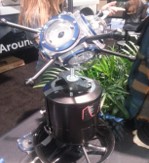
Source: Underwater Drone at CES 2016
Sizing the Underwater Drone Market Opportunity
We like to think of the UUV market as the underwater drone market. Furthermore, we believe that the UUV market is about to ramp as the aerial drone market did during the 1990s. There are several market drivers to accelerate this ramp. These include: military applications, seabed mining, oil and gas, and telecommunications.
Research firm MarketsandMarkets forecasts the UUV market will grow from $1.2 billion in 2014 to $4.8 billion in 2019. MarketsandMarkets also estimates that the global AUV market will expand from $457 million in 2014 at almost 32% CAGR through 2019. Douglas-Westwood estimates that from 2015 through 2019, global subsea vessel operating expenditures will generate $122 billion. The firm also anticipates that by 2018, 825 AUVs will be deployed across the globe, led by the military sector.
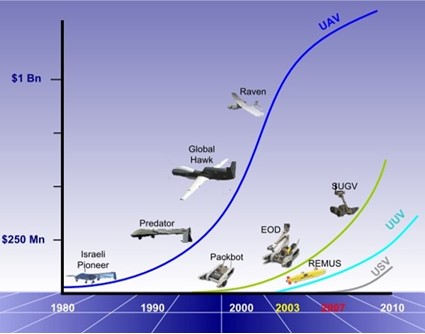
UUV Technical Issues
Creating a UUV is a huge challenge from a technology perspective. The issues that engineers need to consider are overwhelming: navigating without conventional radio communications; withstanding crushing sea pressure; data collection and transfer; fueling; minimizing mechanical noises to not disturb sensitive navigation, data collection, and video systems. These are some of the basics that engineers must consider during the UUV design, prototyping, and testing stages. Depending on the application, design issues can compound. For example, a seabed mapping drone would prefer to capture wide swaths of data at finer resolutions in order to minimize fuel consumption and possibly detection. Pipeline inspection drones would have to transverse hundreds if not thousands of kilometers over uneven terrain leading to the possibility of a crash or drained batteries.
Kraken Sonar Systems – Sea the Opportunity to Make Money
Kraken Sonar Systems (PNG:TSXV), a Sophic Capital client, is a marine technology company engaged in the design, development and marketing of advanced sonar and acoustic velocity sensors for UUVs used in military and commercial applications. The Company is recognized as a leader in synthetic aperture sonar (SAS), a disruptive military technology now available for commercial applications.
In 2013, a Cooperative Research and Development Agreement with the U.S. Navy’s Naval Undersea Warfare Center was successful. The tests involved 26 AUV missions where Kraken’s AquaPix® generated high resolution imagery to ranges as distant as 200 meters from the sensor. The conclusion was that Kraken’s SAS was leading edge and this validation opened the door to sales to other foreign navies. Given that Kraken’s “secret sauce” is in their software, the Company’s margins are high for what looks like a hardware-based product. This is “rare air” – there are only a handful of SAS comparable companies including: Raytheon (RTN:NYSE), Kongsberg (NSKFF:OTCMKTS), Thales (EPA:HO), and Atlas with many of these large companies growing through the acquisition of small, niche, technology plays such as Kraken.
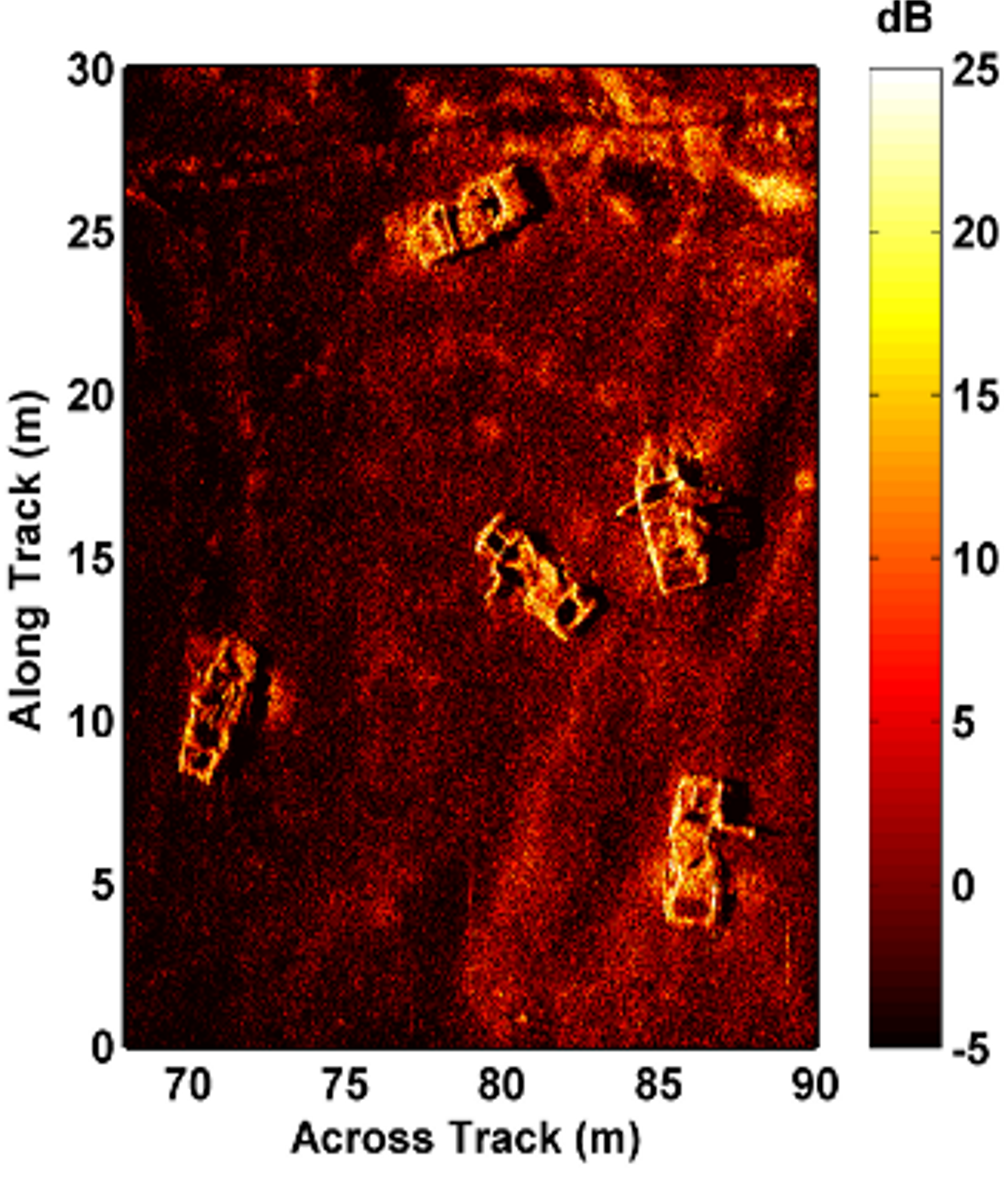
Kraken Sonar imagery of Volvos dumped in Halifax Harbour in 1969
Kraken Sonar is also moving from components to full systems in line with the recent announcement of their own towed vehicle called the KATFISH. Subsequently, a major international defense contractor awarded Kraken with a $1.5 million contract for KATFISH, an order that could scale to $2 million once spare parts and support are factored in. KATFISH continued to gain traction: It turns out that Kraken will supply KATFISH to the Elbit Systems Seagull platform that we discussed previously. This is evidence that KATFISH can participate in large programs by using the channel to market with large major defense contractors. In a separate article published by The Telegram, a source stated that the Elbit Systems/Kraken contract value could be worth $15 million over multi-years.
And to support further KATFISH development, Kraken Sonar has received non-dilutive grants. The first was worth $750,000 (Newfoundland and Labrador government) and $495,000 (National Research Council of Canada Industrial Research Assistance Program) followed.
AquaPix® is Kraken’s 3D bathymetric sensor. AquaPix® can provide detailed images with a resolution better than 3cm out to a range of 300 meters from each side of an underwater vehicle. The sensors can be integrated into AUVs, ROVs, and towed bodies. Kraken recently won a contract for AquaPix® from ECA Robotics of France. The US$325,000 contract will see AquaPix® integrated into ECA’s newest A18D AUVs.
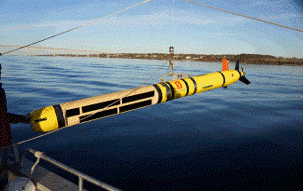
Naval Undersea Warfare Center AUV with Kraken’s AquaPix®
In April 2015, Kraken announced AquaTrak™, an underwater navigation system that processes sensor data to create a correlation velocity log (CVL). Correlation velocity logs apply signal processing techniques to successive SAS pulses received by sensors. Legacy technology relies upon Doppler velocity logs (DVL) that measure the speed of echoes reflected from the seafloor. Due to the fact that electromagnetic waves have poor propagation characteristics in seawater, CVL has an important advantage over DVL; CVL can operate at lower frequencies that propagate better through salt water. This facilitates wider signal beams, deep water operation, higher accuracy, and lower power consumed. In August 2015, Kraken announced a multi-year agreement with Tritech International Limited, a MOOG (MOG.A:NYSE) company, to sell and support AquaTrak™ CVL under the Tritech name and branding.
Kraken acquires an underwater robotics firm to accelerate its sensors-to-systems strategy. On November 17, 2015, Kraken announced that it acquired the underwater robotics technology and related intellectual property rights previously owned by Marine Robotics Inc. Essentially, Kraken acquired technology that had been built with over $4 million of investent. This technology should reduce development costs and risks for future platforms.
To round out its product offering, Kraken released SoundPix® for next generation seabed mapping. One of the oldest professions, seabed mapping is a $3 billion annual market, and governments, navies, telecom companies, and offshore energy companies map the seafloor for several of their applications. SoundPix® works with AUVs, USVs, and conventional survey launches.
Exhibit 1: Kraken Sonar Systems Characteristics for Investors to Consider

Source: Company Reports, Sophic Capital
Conclusion – Underwater is the next Big Market for Drones
Underwater drone news has increased since we first published research about this space last fall. Although little is occurring within the consumer sea drone space, the military and industrial sectors have seen heavy news flow validating the value and utility of UUVs. Kraken Sonar Systems is a pure play UUV company led by a seasoned management that has built and sold companies. We believe Kraken Sonar Systems will reward patient investors who believe in the billion dollar UUV sector.
Acronyms Used in this Report
AUV autonomous underwater vehicle
CES Consumer Electronics Show
CVL correlation velocity log
DVL Doppler velocity log
ROV remotely operated underwater vehicle
SAS synthetic aperture sonar
SONAR SOund NAvigation and Ranging
UAV unmanned aerial vehicle
USV unmanned surface vehicle
UUV unmanned underwater vehicle
Disclaimers
The information and recommendations made available here through our emails, newsletters, website, press releases, collectively considered as (“Material”) by Sophic Capital Inc. (“Sophic” or “Company”) is for informational purposes only and shall not be used or construed as an offer to sell or be used as a solicitation of an offer to buy any services or securities. You hereby acknowledge that any reliance upon any Materials shall be at your sole risk. In particular, none of the information provided in our monthly newsletter and emails or any other Material should be viewed as an invite, and/or induce or encourage any person to make any kind of investment decision. The recommendations and information provided in our Material are not tailored to the needs of particular persons and may not be appropriate for you depending on your financial position or investment goals or needs. You should apply your own judgment in making any use of the information provided in the Company’s Material, especially as the basis for any investment decisions. Securities or other investments referred to in the Materials may not be suitable for you and you should not make any kind of investment decision in relation to them without first obtaining independent investment advice from a qualified and registered investment advisor. You further agree that neither Sophic, its employees, affiliates consultants, and/or clients will be liable for any losses or liabilities that may be occasioned as a result of the information provided in any of the Company’s Material. By accessing Sophic’s website and signing up to receive the Company’s monthly newsletter or any other Material, you accept and agree to be bound by and comply with the terms and conditions set out herein. If you do not accept and agree to the terms, you should not use the Company’s website or accept the terms and conditions associated to the newsletter signup. Sophic is not registered as an adviser under the securities legislation of any jurisdiction of Canada and provides Material on behalf of its clients pursuant to an exemption from the registration requirements that is available in respect of generic advice. In no event will Sophic be responsible or liable to you or any other party for any damages of any kind arising out of or relating to the use of, misuse of and/or inability to use the Company’s website or Material. The information is directed only at persons resident in Canada. The Company’s Material or the information provided in the Material shall not in any form constitute as an offer or solicitation to anyone in the United States of America or any jurisdiction where such offer or solicitation is not authorized or to any person to whom it is unlawful to make such a solicitation. If you choose to access Sophic’s website and/or have signed up to receive the Company’s monthly newsletter or any other Material, you acknowledge that the information in the Material is intended for use by persons resident in Canada only. Sophic is not an investment advisory, and Material provided by Sophic shall not be used to make investment decisions. Information provided in the Company’s Material is often opinionated and should be considered for information purposes only. No stock exchange anywhere has approved or disapproved of the information contained herein. There is no express or implied solicitation to buy or sell securities. Sophic and/or its principals and employees may have positions in the stocks mentioned in the Company’s Material, and may trade in the stocks mentioned in the Material. Do not consider buying or selling any stock without conducting your own due diligence and/or without obtaining independent investment advice from a qualified and registered investment advisor.

